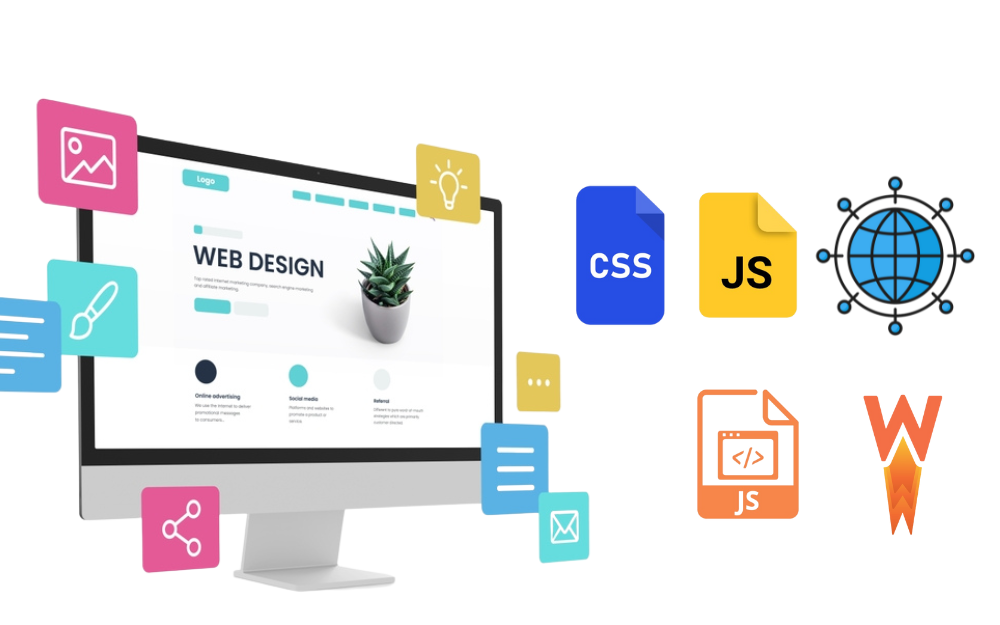How to minifying CSS and JavaScript files impact website performance?
In today’s digital age, where attention spans are fleeting and competition is fierce, the performance of your website can make or break your online presence. Every second counts when it comes to retaining visitors and satisfying their browsing experience. One powerful technique that can significantly enhance website performance is the minification of CSS and JavaScript files. In this blog, we delve into the intricate relationship between minification and website performance, exploring how this optimization process can elevate the user experience and boost your site’s success.
Explanation of Minification
Let’s start with the basics: what exactly is minification? At its core, minification is the process of removing unnecessary characters from code without altering its functionality. This primarily involves eliminating whitespace, comments, and other non-essential elements from CSS and JavaScript files. By stripping away these excess components, minification reduces file size, resulting in faster load times and improved performance.
Importance of Website Performance
Why does website performance matter? Put simply, it directly impacts user satisfaction and engagement. Studies have consistently shown that users are more likely to abandon a website if it takes too long to load. In fact, even a delay of just a few seconds can have a significant negative impact on conversion rates. Additionally, search engines like Google prioritize fast-loading websites in their rankings, meaning that sluggish performance can also harm your site’s visibility and SEO efforts. By optimizing performance through techniques like minification, you can enhance user experience, increase engagement, and boost your site’s overall success.
Overview of CSS and JavaScript Files in Web Development
CSS (Cascading Style Sheets) and JavaScript are foundational elements of modern web development. CSS is used to style the layout and appearance of web pages, while JavaScript adds interactivity and dynamic functionality. However, as websites become more complex and feature-rich, the size of CSS and JavaScript files can balloon, leading to slower load times and diminished performance. This is where minification comes into play, offering a streamlined solution to reduce file size and optimize performance without sacrificing functionality.
What is Minification?
Minification is the process of reducing the size of CSS and JavaScript files by removing unnecessary characters, such as whitespace, comments, and formatting, without altering their functionality. The primary purpose of minification is to improve website performance by reducing file size, thereby enhancing load times and overall user experience. By streamlining code and eliminating redundancies, minification ensures that web pages load quickly and efficiently, even on devices with limited bandwidth or processing power.
Process of Minifying CSS and JavaScript Files
The process of minifying CSS and JavaScript files typically involves several steps:
- Whitespace Removal: This involves eliminating spaces, tabs, and line breaks from the code, as these characters are unnecessary for execution and only contribute to file size.
- Comment Removal: Comments are often included in code for documentation purposes but are not required for execution. Minification removes these comments to further reduce file size.
- Variable Shortening: Minification may also involve shortening variable names to reduce their length, although this step must be performed carefully to avoid compromising readability or functionality.
- Optimizing Syntax: Minification tools may optimize syntax and structure to further reduce file size without altering the code’s behavior.
Tools and Techniques Used for Minification
Several tools and techniques are available for minifying CSS and JavaScript files, ranging from manual processes to automated tools:
- Manual Minification: Developers can manually minify CSS and JavaScript files by removing whitespace, comments, and unnecessary characters using a text editor or IDE. While this approach provides greater control over the minification process, it can be time-consuming and prone to human error.
- Online Minification Tools: There are numerous online tools and services available that automate the minification process. These tools allow developers to upload their CSS and JavaScript files and receive minified versions in return, often with customizable options for optimization.
- Build Tools and Task Runners: Build tools like Gulp and Grunt, along with task runners like Webpack, offer built-in support for minifying CSS and JavaScript files as part of the build process. Developers can configure these tools to automatically minify files during deployment, streamlining the development workflow.
- Content Delivery Networks (CDNs): Some CDNs offer built-in minification and optimization features, allowing developers to serve minified versions of CSS and JavaScript files directly from the CDN’s servers. This can further enhance website performance by reducing latency and bandwidth usage.
Best Practices for Minification
Choosing the Right Minification Tools
Selecting the appropriate minification tools is crucial for achieving optimal results. Consider the following factors when choosing minification tools:
Compatibility: Ensure that the minification tools are compatible with your development environment and workflow. Whether you’re using a text editor, build tool, or online service, the chosen tools should seamlessly integrate into your existing processes.
Customization Options: Look for tools that offer customization options to tailor the minification process to your specific needs. This may include options for adjusting compression levels, preserving certain code elements, or excluding files from minification.
Performance: Evaluate the performance of minification tools in terms of speed and efficiency. Choose tools that can handle large files and complex codebases without sacrificing performance.
Community Support: Consider the level of community support and documentation available for the minification tools. Tools with active communities and extensive documentation are more likely to receive regular updates and provide reliable support.
Regular Maintenance and Updates to Minified Files
Minified files should not be treated as static artifacts but rather as dynamic components that require regular maintenance and updates. Here’s how to ensure the ongoing effectiveness of minified files:
Version Control: Utilize version control systems like Git to manage changes to minified files and track revisions over time. This allows you to revert to previous versions if necessary and maintain a history of optimizations.
Automated Processes: Incorporate minification into your automated build and deployment processes to ensure that files are minified consistently and efficiently with each update.
Dependency Management: Keep track of dependencies and third-party libraries used in your codebase, as updates to these dependencies may impact minification settings or require adjustments to minified files.
Scheduled Reviews: Schedule regular reviews of minified files to identify opportunities for further optimization or updates. This may include removing deprecated code, optimizing new features, or adjusting minification settings based on evolving best practices.
Conclusion
In conclusion, minifying JavaScript and CSS files isn’t just about reducing their size—it’s a strategic imperative for enhancing website performance. By stripping away unnecessary characters and whitespace, minification significantly accelerates load times, improves server response, and boosts overall page speed, crucial factors for retaining user engagement and SEO ranking. It reflects a commitment to efficiency and excellence in web development, demonstrating a proactive approach to optimizing user experience across devices and platforms. Regular maintenance and updates are key to sustaining these performance gains over time. Embracing the power of minification empowers websites to deliver fast, seamless browsing experiences, setting the stage for enhanced engagement and success in the digital realm.






